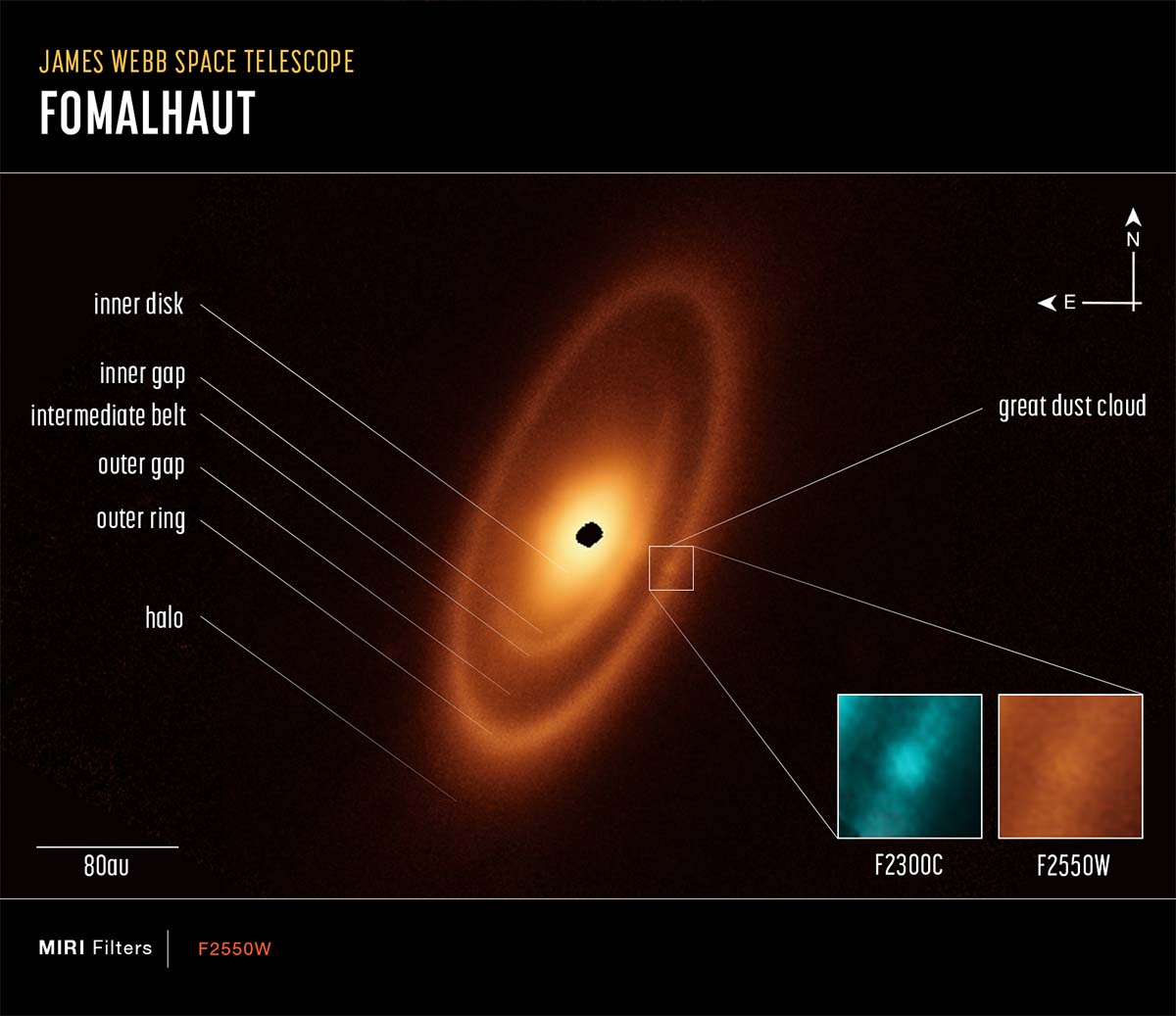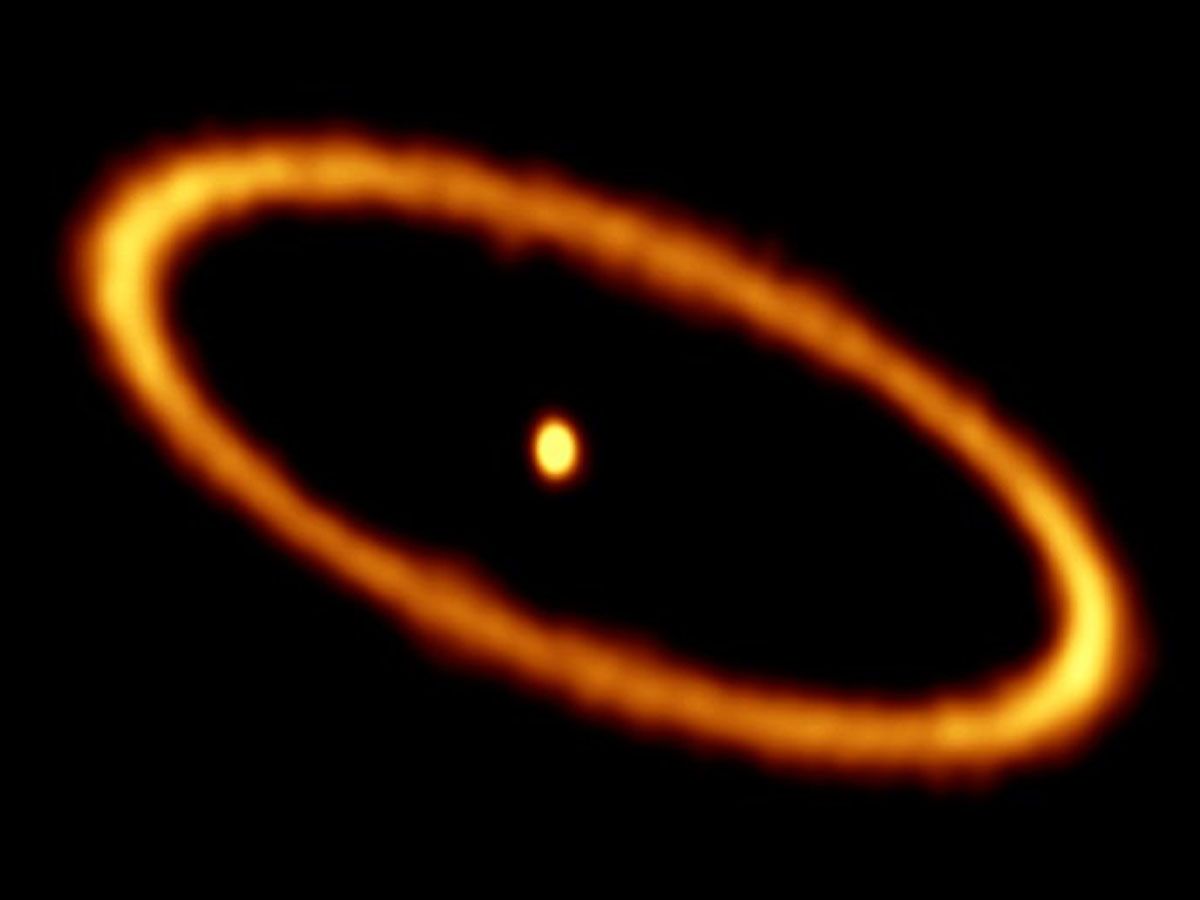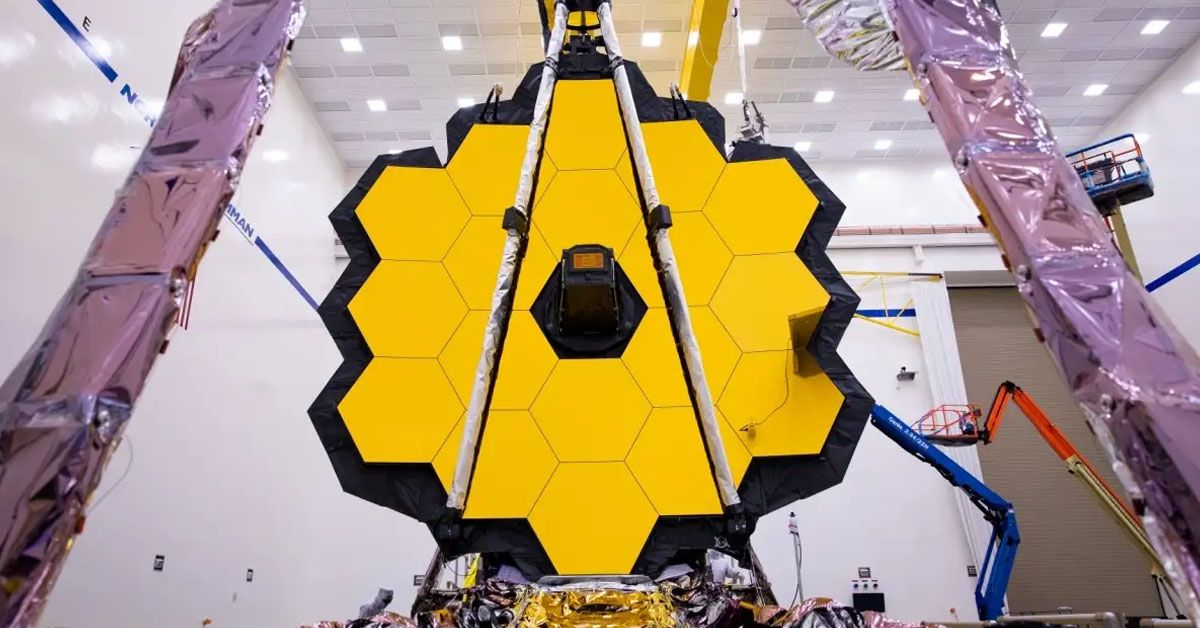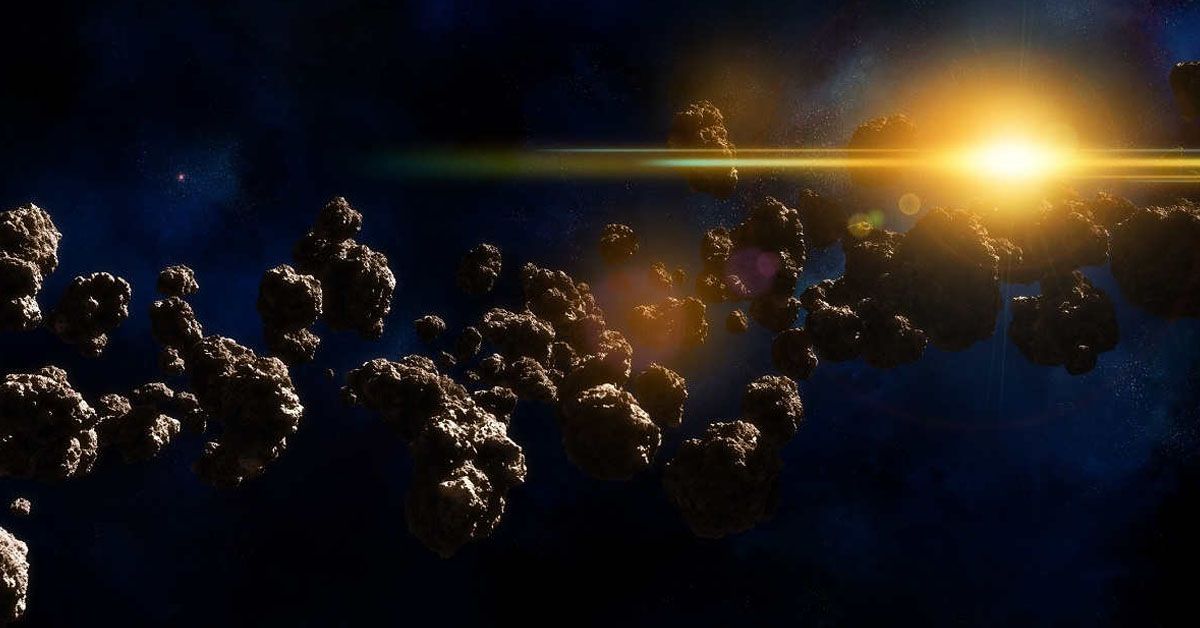James Webb Space Telescope's remarkable discovery is unparalleled, unveiling the secrets of Fomalhaut, an intriguing young star system located just 25 light-years from Earth. This unprecedented revelation has delighted scientists everywhere providing them with their first-ever infrared image of an exo-asteroid belt, showing three nested belts of dusty debris around its star. These extraordinary findings not only deepen our knowledge about Fomalhaut but also provide new insight into planetary systems around our galaxy and beyond.
The James Webb Space Telescope's Discoveries in the Fomalhaut System
Imagine the thrill of unearthing a hidden gem in the vastness of the cosmos. That's precisely the exhilaration experienced by astronomers when the James Webb Space Telescope captured the first-ever infrared image of an exo-asteroid belt. Located around Fomalhaut, a young and brilliant star visible to the naked eye in the Southern Fish constellation. This unprecedented discovery has intrigued scientists and sparked curiosity about the characteristics of these extraterrestrial asteroid belts.
The intrigue doesn't stop there! The Webb's Mid-Infrared Instrument (MIRI) has uncovered not one, but three nested belts extending a staggering 14 billion miles (23 billion kilometers) from Fomalhaut. These dusty belts, known as debris disks, are the remnants of colossal collisions between larger celestial bodies like asteroids and comets. The sheer complexity of Fomalhaut's ring system surpasses that of both the Kuiper Belt and the main asteroid belt in our solar system, making it a truly remarkable cosmic phenomenon.

But wait, there's more! The James Webb Space Telescope has achieved another milestone by resolving the inner belts of the Fomalhaut system for the first time in infrared light. This extraordinary feat offers astronomers invaluable insights into the configurations of planets in other star systems. By studying these never-before-seen inner belts, researchers can piece together a more comprehensive picture of Fomalhaut's exoplanetary system and potentially uncover hidden planets that have eluded detection until now.
The Significance of Debris Disks in Exoplanetary Systems
To fully appreciate the importance of debris disks, it's crucial to distinguish them from their cosmic counterparts, protoplanetary disks. While protoplanetary disks consist of material that later coalesces to form planets, debris disks emerge after planets have already taken shape. They are composed of dust and remnants from collisions between larger celestial bodies like asteroids and comets. By studying these debris disks, scientists can glean invaluable information about the dynamic processes occurring in exoplanetary systems.
Debris disks offer us a unique window into the formation and evolution of planets. Examining dust contained within these disks can provide insights into exoplanetary systems' structures as well as aid researchers in untangling celestial bodies' intricate interactions, all key knowledge in furthering our understanding of how solar systems form, evolve, and interact with their environments.

Astronomers believe that debris disks may be influenced by hidden planets whose gravitational forces shape these dusty rings. This hypothesis mirrors the impact of Jupiter and Neptune in our solar system, where they corral and sculpt the asteroid belt and Kuiper Belt, respectively. Uncovering the role of unseen planets in debris disk formation can shed light on the intricate dance of celestial bodies and potentially reveal new worlds waiting to be discovered.
Fomalhaut's Unique Features and Their Implications
Among Fomalhaut's fascinating features, the "great dust cloud" stands out as a tantalizing clue about the system's history. This anomaly may indicate a collision between two protoplanetary bodies in the outer ring of the star system. By studying the great dust cloud, researchers can gain insights into the dramatic events that shape the formation of planets and how these cosmic collisions might impact the evolution of planetary systems.
Fomalhaut's debris disk reveals another peculiarity: a tilted asteroid belt that deviates by a 23-degree angle from the rest of the system's orbital plane. This intriguing discovery suggests that a misaligned planet may be dragging the asteroid belt off-kilter. By investigating this hypothesis, astronomers can learn more about the gravitational forces at play in exoplanetary systems and the potential for hidden planets to reshape their cosmic neighborhoods dramatically.

As a complex and dynamic star system, Fomalhaut serves as a promising archetype for understanding debris disks found elsewhere in our galaxy. With its similarities to our own planetary system, Fomalhaut can provide invaluable insights into the formation and evolution of planetary systems across the cosmos. By studying the patterns in Fomalhaut's debris disks, astronomers can begin to piece together a clearer picture of what exoplanetary systems might look like and how they interact with their celestial surroundings.
Future Observations and Research with the James Webb Space Telescope
James Webb Space Telescope's groundbreaking discoveries in the Fomalhaut system have opened the door for further observations and research, including expanding studies of debris disks around other stars. Astronomers hope that by studying such cosmic rings across a diverse set of star systems, they may gain important data regarding exoplanetary formation, characteristics, and behavior broadening our knowledge of our universe.

Fomalhaut remains shrouded in mystery, and James Webb Space Telescope will play an instrumental role in unlocking its secrets. Boasting unrivaled capabilities, this telescope will enable researchers to delve deeper into Fomalhaut's unique features such as a tilted asteroid belt and large dust cloud. These observations will allow scientists to detect hidden planets as well as gain insight into dynamic interactions that shape their structure and evolution.
Future observations and research with the James Webb Space Telescope will have an immense effect on our understanding of planet formation and evolution. By studying Fomalhaut's debris disks closely and expanding this research to other stars, astronomers will gain an unparalleled insight into the complex processes that shape planetary system formation and growth. The knowledge not only deepens our appreciation of space but sheds light on mechanisms that have shaped both our own solar system as well as all those beyond.
Sources: nature.com / nasa.gov / sciencenews.org / scientificamerican.com / space.com













